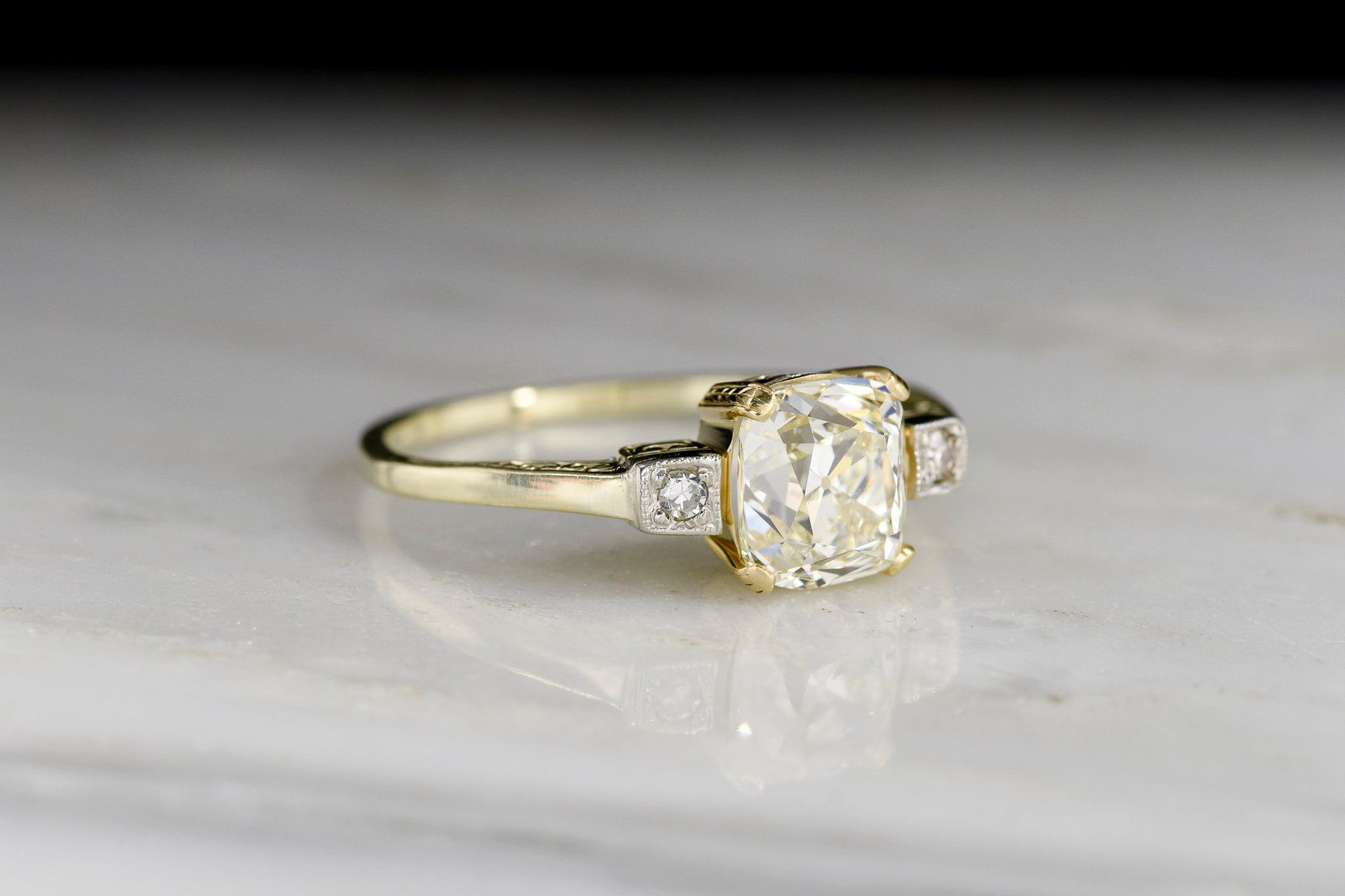Since time immemorial, Indian brides-to-be have been taught the importance of ‘Solar Srringaar’. The sixteen pieces of adornment are not only the symbols of a bride’s marital status, but have deep rooted implications. Even the Indian mythology has some interesting instances. Remember the episode in the epic Ramayana by sage Valmiki when Anusuya gives her ornaments to Sita and tells her that a married woman must always be adorned with Solar Shringaar! We also find references to Shringaars in the epic poem Geet Govind by Jayadeva when Radha asks Lord Krishna to adorn her body with jewellery, her hair with flowers, put a hindi on her forehead and earrings on her ears when it is time for her to go home. The pieces of Srringaar not only serve the purpose of gracing the woman but they are important tokens of her social status.
Popular culture would have us believe that our heritage, our customs and rituals have no logical base to them. However, contrary to this, these rituals are a development of scientific study and research. Indian sages and seers were scholars of Astrology, Ayurveda and Astronomy. Their research provides us appropriate explanations behind the adornments.
There are only sixteen items of a bride’s beautification and not more or less. It is because the Solah Shringaar corresponds to the sixteen phases of the moon which are linked to a woman’s menstrual cycle. This has a negative effect on a woman’s mental and physical wellness. Our ancient sages believed that these effects could be nullified by wearing the sixteen items of cosmetics and jewellery. There are scientific reasons behind each element of Shringaar which enhances a bride’s beauty. The reasons help in making her more adept at her wifely duties.
Shringaars that add colours
Sindoor is the most important element of the Solah Shringaars. It symbolises not only the beginning of a woman’s marriage but also the commencement of her sexual life. It is applied in the middle parting line of the brides hair where lies the brahmarandra aperture which is a woman’s point of balance. The mercury present in sindoor helps in cooling down the bride. After marriage the free spirited girl transforms into a woman and has to shoulder the responsibilities which can devitalise her. The sindoor is very important for a bride as it will help her in maintaining her serenity and peace.
A bindi, worn on the forehead between the eyebrows pretties up the bride in an instant and makes her fair features even more gorgeous. The bindi not only accentuates her features but activates a woman’s Ajna Chakra or the forehead chakra through the pressure which is applied by the weight of the bindi. Ajna, translating to ‘commando’ is believed to be the eye of intuition. This chakra acts as a gateway for all the spiritual energy coming from the environment. It also protects the chakra from the surrounding negative energy. The bride is expected to perform her duties proficiently for which her Ajna Chakra must be properly activated to let her maintain her mental balance in her new house and absorb the new energies.
Mehendi, the most basic component of the Solah Shringaar, not only lends colour to the arms and feet of the bride, but has medicinal properties too. Weddings are serious business in India and can get very cumbersome. Therefore on the night before the wedding, mehendi or Henna is applied on arms and feet- home to our body’s nerve endings, to destress and relieve them. Also, mehendi heals the minor cuts and bruises the bride might have sustained during the preparations.
Kohl, used since the times of Greek queen Cleopatra not only makes a bride’s eyes look expressive and innocent but it is believed to purify the eyes from the pollutants. It also protects the eyes from the sun’s harmful rays. Weddings tend to get exhausting for the bride since many preparations are involved which takes months.
Hindu brides wear dresses having colours like red, maroon and pink on their wedding day because these colours signify fertility and passion. Red and orange are associated with the rising sun, which connotes the beginning of a new life for the bride. Also in Hindu tradition, the planet Mars which is reddish in colour is linked with marriage and hence these colours are preferred by Hindu brides. These colours fill the bride with vitality and fire that’re important for her married life.
Shrigaars that add rhythm
Nath, not just a symbol of marriage, but has an Ayurvedic significance too. Having the nose pierced on the left side is customary for the Indian brides for a good reason. The spot for the nose pierce is linked to the reproductive organs of a woman. It is said to ease menstrual and labour pains. Not only this, the piercing also contributes to the general reproductive health of the bride thus making her fertile enough to procreate. The nose pierce is also associated with protecting the nasal track of the bride, thereby preventing her from any kind of infection when she enters a new milieu. The modern version of nath is called the nose stud/ring which is smaller than its older version and can be worn with any outfit.
The choodicur/chuda looks divine on a bride’s hands. Besides being a mark of her siihaag, the choodian and paval aid the bride in maintaining her energy levels throughout the day. Her strength, which gets consumed while doing the house-hold chores gets vibrated back to the body through the sound waves produced by the choodian and papal. Also, a payal prevents inflammation of foot soles and aid in general blood circulation of the body. Hindus also believe that the crackling sound of the choodivan and papal helps ward off the negative or evil energy. The modern bride prefers to wear bracelets and anklets which are much sleeker and trendier.
Jewellery is the most prominent element of a woman’s bridal attire. They grace the bridal look like nothing else does. Ornaments made of gold and silver, like mangalsutra, Kamarbandh, Bajubandh, Harm: Karnphool, Maangteeka and Bichua etc. are worn by the Indian brides. Gold is believed to have a hot effect and silver has cooling properties on skin thus helping in maintaining body temperature. These metals are used in abundance in a bride’s trousseau as they have cancer averting properties. Emperor Akbar is believed to have gifted many pieces of unique navratan and kundari jewellery to his beloved Mumtaz Mahal.
Shringaars that add fragrance
Gajra is a bunch or a string of flowers, usually made of jasmine, which is worn by the bride in her hair for making her hairstyle stand out. They not only beautify her hair but their aroma lends a sense of freshness and calmness to the bride on her wedding day when she is tense about leaving her parents and going to her husband’s house.
Itra (perfume) besides making the bride smell heavenly, stimulates the bride’s senses. Itra made of fragrant ingredients like rose and sandalwood lifts the bride’s spirits and moods on the day of her marriage. Scents trigger the bride’s emotions and enhance her mood on the day when she has to leave her parents.
Meaningful adornment
On her wedding day, the bride is the centre of attraction and must look divine. Hence the Solah Shringaars is of utmost importance for a bride. She is adorned from head to toe to capture her groom’s attention forever and prevent him from going astray. Not just on their wedding day, women wear all the Solah Shringaars even on festivals like Karvachauth and Teej as a mark of love for their husbands.
However, the modern brides have given a modern twist to the items of Shringaar. For example liquid Sindoor has replaced the traditional powdered one. The Gajra has been replaced by various hair accessories like artificial flowers and metal hair pins. Nowadays instead of Menendi which takes hours to apply, brides opt for Mehendi tattoos which are quicker to apply. The vermilion bindi has given way to sticking ones having Kundan or Zircon stones on them that can be worn with both the traditional and Indo-Western outfits.
Bring back the charm
Indian brides, though not so conventional anymore, but haven’t forgotten the significance of these items and are still rooted. Looks are God’s gift but beauty is what you can acquire and solar shringar will help you achieve that.
So brides-to-be and all the other women bring out all your fine jewellery and cosmetics from the confines of your lockers and flaunt them proudly, for now you know how very beneficial the Solah Shringaar is. Not only will you benefit yourself, but make your husband go crazy about you by waking him up by the rhythmic sound of your choodian or papal and by asking him to decorate your hair parting with sindoor and your luscious hair with gajra. So adorn yourself more ‘meaningfully!’






More Stories
Businessman Gets Knocked Out by Giant Breasts
The History of Makeup
Want to Read a Volufiline Review?